Entry Database : PDB / ID : 5i4zTitle Structure of apo OmoMYC Myc proto-oncogene protein Keywords / / / / Function / homology Function Domain/homology Component
/ / / / / / / / / / / / / / / / / / / / / / / / / / / / / / / / / / / / / / / / / / / / / / / / / / / / / / / / / / / / / / / / / / / / / / / / / / / / / / / / / / / / / / / / / / / / / / / / / / / / / / / / / / / / / / / / / / / / / / / / / / / / / / / / / / / Biological species Homo sapiens (human)Method / / / Resolution : 1.95 Å Authors Koelmel, W. / Jung, L.A. / Kuper, J. / Eilers, M. / Kisker, C. Funding support Organization Grant number Country German Research Foundation 2341
Journal : Oncogene / Year : 2017Title : OmoMYC blunts promoter invasion by oncogenic MYC to inhibit gene expression characteristic of MYC-dependent tumors.Authors: Jung, L.A. / Gebhardt, A. / Koelmel, W. / Ade, C.P. / Walz, S. / Kuper, J. / von Eyss, B. / Letschert, S. / Redel, C. / d'Artista, L. / Biankin, A. / Zender, L. / Sauer, M. / Wolf, E. / ... Authors : Jung, L.A. / Gebhardt, A. / Koelmel, W. / Ade, C.P. / Walz, S. / Kuper, J. / von Eyss, B. / Letschert, S. / Redel, C. / d'Artista, L. / Biankin, A. / Zender, L. / Sauer, M. / Wolf, E. / Evan, G. / Kisker, C. / Eilers, M. History Deposition Feb 13, 2016 Deposition site / Processing site Revision 1.0 Oct 26, 2016 Provider / Type Revision 1.1 Apr 19, 2017 Group Revision 1.2 Jan 10, 2024 Group Author supporting evidence / Data collection ... Author supporting evidence / Data collection / Database references / Derived calculations / Refinement description Category chem_comp_atom / chem_comp_bond ... chem_comp_atom / chem_comp_bond / database_2 / pdbx_audit_support / pdbx_initial_refinement_model / pdbx_struct_conn_angle / struct_conn Item _database_2.pdbx_DOI / _database_2.pdbx_database_accession ... _database_2.pdbx_DOI / _database_2.pdbx_database_accession / _pdbx_audit_support.funding_organization / _pdbx_struct_conn_angle.ptnr1_auth_asym_id / _pdbx_struct_conn_angle.ptnr1_auth_comp_id / _pdbx_struct_conn_angle.ptnr1_auth_seq_id / _pdbx_struct_conn_angle.ptnr1_label_asym_id / _pdbx_struct_conn_angle.ptnr1_label_atom_id / _pdbx_struct_conn_angle.ptnr1_label_comp_id / _pdbx_struct_conn_angle.ptnr1_label_seq_id / _pdbx_struct_conn_angle.ptnr1_symmetry / _pdbx_struct_conn_angle.ptnr2_auth_seq_id / _pdbx_struct_conn_angle.ptnr2_label_asym_id / _pdbx_struct_conn_angle.ptnr3_auth_asym_id / _pdbx_struct_conn_angle.ptnr3_auth_comp_id / _pdbx_struct_conn_angle.ptnr3_auth_seq_id / _pdbx_struct_conn_angle.ptnr3_label_asym_id / _pdbx_struct_conn_angle.ptnr3_label_atom_id / _pdbx_struct_conn_angle.ptnr3_label_comp_id / _pdbx_struct_conn_angle.ptnr3_label_seq_id / _pdbx_struct_conn_angle.ptnr3_symmetry / _pdbx_struct_conn_angle.value / _struct_conn.pdbx_dist_value / _struct_conn.ptnr1_auth_asym_id / _struct_conn.ptnr1_auth_comp_id / _struct_conn.ptnr1_auth_seq_id / _struct_conn.ptnr1_label_asym_id / _struct_conn.ptnr1_label_atom_id / _struct_conn.ptnr1_label_comp_id / _struct_conn.ptnr1_label_seq_id / _struct_conn.ptnr2_auth_asym_id / _struct_conn.ptnr2_auth_comp_id / _struct_conn.ptnr2_auth_seq_id / _struct_conn.ptnr2_label_asym_id / _struct_conn.ptnr2_label_atom_id / _struct_conn.ptnr2_label_comp_id / _struct_conn.ptnr2_symmetry Revision 1.3 Nov 20, 2024 Group / Category / pdbx_modification_feature
Show all Show less
 Open data
Open data Basic information
Basic information Components
Components Keywords
Keywords Function and homology information
Function and homology information Homo sapiens (human)
Homo sapiens (human) X-RAY DIFFRACTION /
X-RAY DIFFRACTION /  SYNCHROTRON /
SYNCHROTRON /  MOLECULAR REPLACEMENT / Resolution: 1.95 Å
MOLECULAR REPLACEMENT / Resolution: 1.95 Å  Authors
Authors Germany, 1items
Germany, 1items  Citation
Citation Journal: Oncogene / Year: 2017
Journal: Oncogene / Year: 2017 Structure visualization
Structure visualization Molmil
Molmil Jmol/JSmol
Jmol/JSmol Downloads & links
Downloads & links Download
Download 5i4z.cif.gz
5i4z.cif.gz PDBx/mmCIF format
PDBx/mmCIF format pdb5i4z.ent.gz
pdb5i4z.ent.gz PDB format
PDB format 5i4z.json.gz
5i4z.json.gz PDBx/mmJSON format
PDBx/mmJSON format Other downloads
Other downloads 5i4z_validation.pdf.gz
5i4z_validation.pdf.gz wwPDB validaton report
wwPDB validaton report 5i4z_full_validation.pdf.gz
5i4z_full_validation.pdf.gz 5i4z_validation.xml.gz
5i4z_validation.xml.gz 5i4z_validation.cif.gz
5i4z_validation.cif.gz https://data.pdbj.org/pub/pdb/validation_reports/i4/5i4z
https://data.pdbj.org/pub/pdb/validation_reports/i4/5i4z ftp://data.pdbj.org/pub/pdb/validation_reports/i4/5i4z
ftp://data.pdbj.org/pub/pdb/validation_reports/i4/5i4z

 Links
Links Assembly
Assembly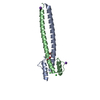
 Components
Components Homo sapiens (human) / Gene: MYC, BHLHE39 / Production host:
Homo sapiens (human) / Gene: MYC, BHLHE39 / Production host: 
 X-RAY DIFFRACTION / Number of used crystals: 1
X-RAY DIFFRACTION / Number of used crystals: 1  Sample preparation
Sample preparation SYNCHROTRON / Site:
SYNCHROTRON / Site:  ESRF
ESRF  / Beamline: ID23-1 / Wavelength: 1.064 Å
/ Beamline: ID23-1 / Wavelength: 1.064 Å Processing
Processing MOLECULAR REPLACEMENT
MOLECULAR REPLACEMENT Movie
Movie Controller
Controller



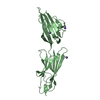
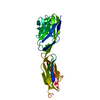
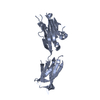
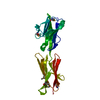
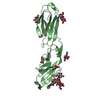
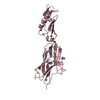
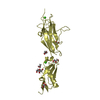
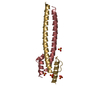
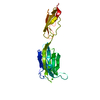

 PDBj
PDBj


















